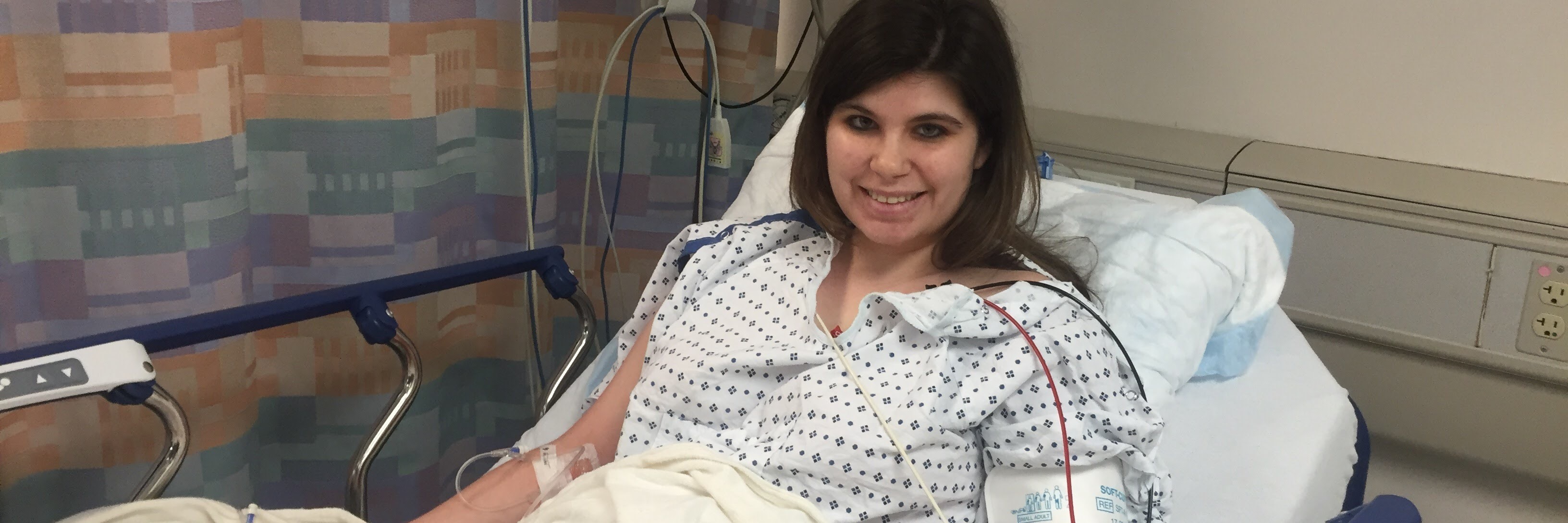The first day in August is just another day of summer for most. But for those of us living with gastroparesis, August 1st marks the beginning of one month of awareness. The month of August has been declared Gastroparesis Awareness Month and is set up to raise both funding and awareness for this serious motility disorder.
So what is gastroparesis anyway? Gastroparesis is a rare yet serious motility disorder that means that those diagnosed have stomachs that are literally paralyzed. Those with gastroparesis can experience any or all of the following symptoms: severe chronic nausea, vomiting, weight loss, weight gain, hair loss, malnutrition, severe abdominal pain, constipation, diarrhea, extreme fatigue from lack of nutrition, brain fog, dehydration, vitamin deficiencies and much more.
Gastroparesis can be caused by the following: diabetes, post-surgical, a virus or it can be idiopathic (doctors do not know the cause). It can be diagnosed through a number of tests: an upper endoscopy (a camera placed down the patient’s throat where they can see food sitting in the stomach), GES (gastric emptying scan – the patient eats a radioactive meal to track the progress of digestion) and the smart pill (tracks motility/digestion rate). Those with gastroparesis can have food sitting in their stomach for hours or even days.
Some with gastroparesis must remain on a liquid diet while some can control their symptoms with diet modifications and can eat more normally (eating six to eight small meals that consist of little fat and fiber). Most require several medications to treat the severe symptoms. These medications may come with side effects. Some of those with gastroparesis cannot eat at all and require feeding tubes or TPN (nutrition through your veins) in order to maintain their nutrition.
There is currently no cure for gastropareis and there are limited treatment options available. The treatment options include: medications for nausea/vomiting, medications for constipation/diarrhea, medications to increase motility (such as domperidone – which is no longer available in the US – and reglan – which has a black box warning), Botox injections into the pylorus, a pyloroplasty (completely cutting the pylorus muscle to allow food to travel out of the stomach more quickly), a gastric electrical stimulator (transmits signals to stimulate digestion/emptying time), a transpyloric stent (only a temporary treatment) and a G-POEM (partial cut in the pylorus). Some even have part or all of their stomach removed.
There are several comorbid conditions that go along with gastroparesis (meaning that patients often have multiple conditions). Many of those with gastroparesis have a laundry list of other chronic illnesses.
In 2003, gastroparesis patients were charged (to insurance if relevant) an average of $85,000 a year for hospital-based charges alone. These charges don’t include eternal/parenteral feedings, home health care, time lost from work, medications, formulas and supplements, infusion pumps and dressings. These patients will be paying these medical bills for the rest of their lives as gastroparesis is a chronic, lifelong condition. Many are unable to work, yet some struggle to receive disability. Gastroparesis is not typically recognized as a disability, but applicants can receive benefits if they meet the SSA’s definition for disability. This means that some don’t have healthcare or the income to cover their medical expenses.
So what? What does this mean for you? First and foremost, we need awareness. Second, we need funding for treatment and research. And lastly, we need gastroparesis to be recognized as the disabling condition it is so we can receive the help many of us so desperately need.
What can you do to help?
– Sign this request to grant more funding for research of gastroparesis.
– Sign this petition for the SSA to recognize gastroparesis as a disability.
– Take the Gastroparesis Pie Face Challenge and post the video to your social media accounts.
– Donate to G-PACT (Gastroparesis Patient Association for
Cures and Treatments, Inc.).
– Wear green for GP on Fridays!
Gastroparesis affects four percent of the population and is considered a rare disorder. Yet it does not feel rare to the five million Americans with this devastating condition. When you add a face to the disease, it becomes more real and less rare. I am one of the many faces of gastroparesis.
We are literally starving for a cure. Will you help us find one?
We want to hear your story. Become a Mighty contributor here.




